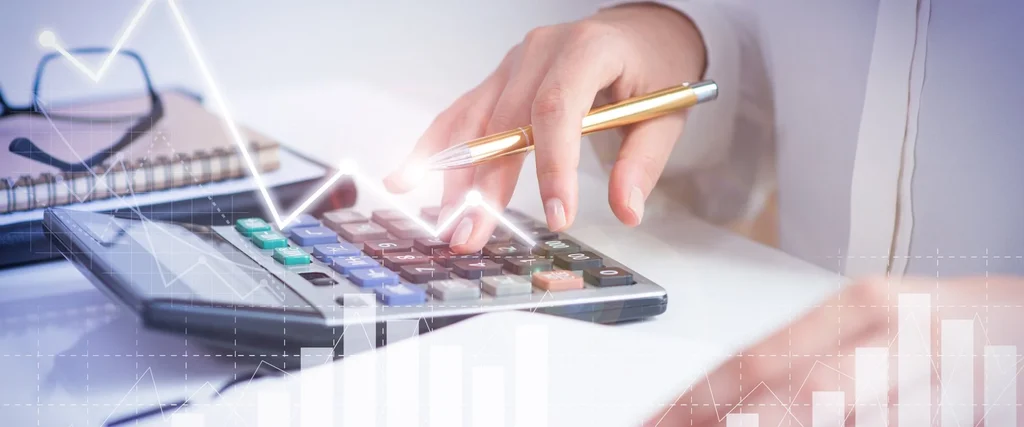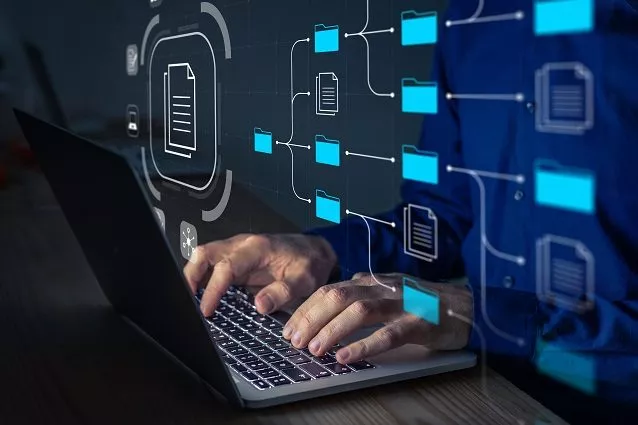

11 August 2021
Incoming invoices: From verification to storage
Incoming invoices are an integral part of the day-to-day work of a company’s finance department. They are often received in large numbers. Processing them ties up resources. And sometimes errors can be costly. But what exactly are incoming invoices? How are they processed? How can they be reliably recorded – and what are the benefits of digital processes?
What is an incoming invoice?
Suppliers or vendors write invoices for the use of goods or services. This is sent to the company and is thus defined as an incoming invoice. The term “outgoing invoice” is used when the invoice is sent by the service provider or supplier to the customer.
The incoming invoice serves as proof of the existence of a claim that is already due through the conclusion of the contract or the execution of the service or delivery of goods. In the event of a delay in payment, the supplier or service provider can refer to the information stored in the invoice.
Verification of incoming invoices
Accordingly, it is important to carry out a comprehensive check of the incoming invoice right at the beginning. According to the Umsatzsteuergesetz (German Value Added Tax Act), all required mandatory information should be included. According to Section 14 (4) UstG, this includes the following information:
- Name/address of the service recipient/provider
- Tax number or VAT identification number of the service provider
- Unique, consecutive invoice number
- Type and scope of the service or goods
- Delivery date or time of performance
- Any price reductions
For smaller amounts of up to 250 euros, considerably less information must be provided in accordance with the UstDV.
In addition to this legal check, there is also a mathematical check – checking the amounts for arithmetical errors – and a factual check. In the latter, the incoming invoice is compared with the delivery bill and the goods delivered or services performed are compared with the information listed in the incoming invoice. If certain information is missing from the invoice, the invoice recipient cannot claim input tax from the tax office or must refund it. Input tax is the value-added tax or sales tax that is due for companies when purchasing services or goods and is refunded by the tax office.
You can find an overview of the mandatory information in invoices here.

Incoming invoices: Posting and account assignment
An incoming invoice is used to indicate the liability to a supplier or service provider. The incoming invoice serves as proof for this and represents an open claim as long as the amount due has not yet been settled, unlike a direct cash payment.
As soon as one receives the incoming invoice, it is a matter of recording the purchase of goods. An example of a accounting record for purchase invoices might look like the following:
Purchase of raw materials for 5,000 euros net.
Raw materials 5.000
to payables (from deliveries and services) 5,950
Pre-tax 950
After the payment is made, it is posted in the accounting program as follows:
Payables from trade 5,950 to bank 5,950.
During account assignment it is decided to which accounts the document should be posted. These accounts are then noted on the document. A distinction is made in the company between internal and external documents. Internal documents include invoices issued by the company, i.e. outgoing invoices, but also accounting lists from payroll accounting or salary lists. External documents include incoming invoices, account statements or notices from other companies.
The manual account assignment is mostly done by a receipt stamp, which includes several entry options, among others: Accounting date, document number, account numbers and amount. In addition, information on input and sales tax, cost centers, and possible cash discounts can be taken from the respective chart of accounts.
Retention period for incoming invoices
A retention period of ten years generally applies to invoices. This period begins at the end of the calendar year in which the invoice was issued. However, this 10-year period does not apply to taxes for which the assessment period has not yet expired. This period may also be extended in other cases (for example, in the context of a company audit or tax investigation audit).
Incorrect incoming invoices
The following applies to both the entrepreneur and the service provider or supplier: every invoice must be correct. If it is not, the business partner should be notified immediately. After all, an incorrect incoming invoice can lead to serious financial losses and considerable additional expense – for example, if the invoice needs to be corrected. In addition, you risk trouble with the tax office and a higher sales tax burden.
Common errors include:
- Incorrect tax amounts or rates
- Incorrect invoice numbers
- Calculation errors
- Incorrect address details
Invoices may not be corrected by the invoice recipient, but only by the issuer. In addition, according to the VAT Implementing Regulation, adjustments are only allowed in cases of compelling necessity. This includes incorrect invoice or address data, but the invoice amount may not be changed retrospectively.
Only with a meticulous factual check can the invoice recipient avoid unpleasant consequences. But this process can sometimes take a lot of time. This is because the employee who initiated the order is often entrusted with the factual invoice verification. However, if the employee is ill or on vacation, delays can occur. It can take a long time for an invoice to be cleared, and discount periods may be missed as a result. In extreme cases, there is a risk of reminder fees or Schufa entries.
In addition, there are other factors that make it much more difficult for companies to handle incoming invoices:
- Lack of transparency about the current location of the invoice
- A large number of invoice copies, which in the worst case are distributed across several departments
- Time-consuming research for invoice documents
- Slow process speed
The alternative: digital invoice processing
Today, digital processes and the introduction of electronic invoices (e-invoices) make accounting work noticeably easier and offer a way out of analog bureaucracy. Because with digital invoice processing, recording, checking and approving invoices is a piece of cake – moreover, on the basis of electronic files and completely automated. This means that deadlines are never missed again and cash discounts are secured in good time. According to a Bitkom study, almost one in three organizations in Germany now uses e-invoices, helped in part by legal regulations (see the E-Invoice Act, among others) that have led to a significant increase in digitization among administrations and companies.
Complex filing procedures, time-consuming approval rounds and annoying missed deadlines – these aspects will hardly play a role for the processing of incoming invoices in the future.
Do you have further questions about incoming invoices?
You might also like



